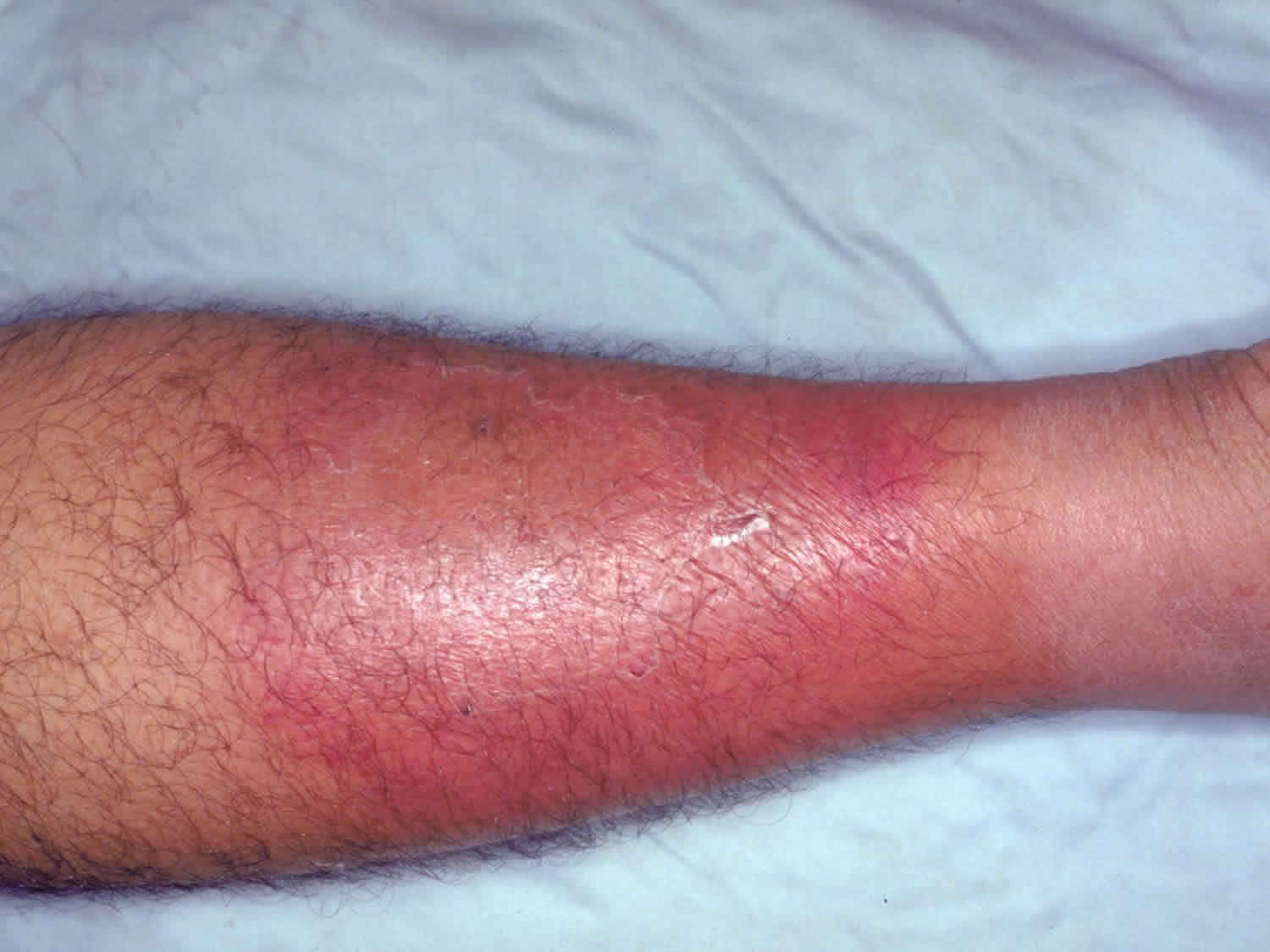This common bacterium is the most frequent cause of typical community-acquired pneumonia in 50 y/o adults.

What is Streptococcus pneumoniae (pneumococcus)?
This group of protozoan parasites is responsible for causing symptoms including splenomegaly, cyclic fevers (characteristic chills, fever, and sweating stages), nausea, and vomiting, often in patients with a history of recent travel to endemic areas. Use a Giemsa stain smear to visualize the parasite.

What are Plasmodium parasites?
A fourth-generation cephalosporin with a broad spectrum of activity against both gram-positive and gram-negative bacteria, including Pseudomonas.
What is cefepime?
This skin infection is commonly the result of infection with gram positive cocci and presents a poorly defined area of redness, swelling, and tenderness.

What is cellulitis?
Note: Purulent cellulitis = s. aureus (below)
Non-purulent = GAS

This bacterium can flourish in the gut after antibiotic use, particularly clindamycin, and cause a distinctive green-gray pseudomembranous colitis, especially in older patients also taking PPIs.
What is Clostridioides difficile?
Note: Treat with ORAL vancomycin!
The encapsulated yeast that causes fever, malaise, neck stiffness, headaches from infection of the meninges and/or brain parenchyma (meningoencephalitis), typically only in patients with severe immunodeficiency (e.g., AIDS) with a CD4+ count LESS THAN 100. Typically has an indolent presentation that progresses over > 2 weeks.
What is Cryptococcus neoformans?
Compared to bacterial meningitis, which presents with very acute symptoms
This class of antibiotics, which function by inhibition of prokaryotic topoisomerase II (DNA gyrase) and topoisomerase IV→ DNA supercoiling → formation of double-stranded breaks → inhibition of DNA replication and transcription (bactericidal effect) is a go-to choice for pneumonia, effectively killing a wide range of bacteria including pseudomonas.
However, they come with serious potential side effects like tendon rupture and QT prolongation, making them unsuitable for children and pregnant women.
What are fluoroquinolones?
This highly contagious bacterial infection is the most common childhood skin infection, characterized by itchy blisters and honey-colored crusts, often found on the face.

What is impetigo?
caused by the bacteria Staphylococcus aureus or, less commonly, Streptococcus pyogenes.
This catalase-positive, Gram-positive coccus is a common cause of skin infections and is often treated with vancomycin

What is Staphylococcus aureus?
Note: Treating for MRSA with vancomycin
These opportunistic molds, known for their rapid and aggressive growth, can cause a rare but life-threatening infection called mucormycosis, particularly in individuals with uncontrolled diabetes or weakened immune systems. One of the characteristic presentations is sinusitis with extensive tissue damage and potential spread to the eyes and brain.
What are the zygomycetes Mucor and Rhizopus (e.g., Rhizopus oryzae)?
This broad-spectrum antibiotic duo combines a ureidopenicillin with a β-lactamase inhibitor to deliver a one-two punch against gram-positive bacteria, gram-negative bacteria, and anaerobes, including pseudomonas. This makes it a valuable weapon against intra-abdominal infections
What is piperacillin/tazobactam?
Individuals with this condition, whether due to surgical removal, congenital absence, or impaired function, have a significantly increased risk of severe infections, particularly from encapsulated bacteria like Streptococcus pneumoniae, Haemophilus influenzae, and Neisseria meningitidis.
What is asplenia?
Asplenic individuals Have No Spleen: H. influenzae, N. meningitidis, and S. pneumonia are the pathogens that most commonly cause asplenic sepsis.
This common cause of food poisoning can lead to bloody diarrhea after eating, abdominal cramps, and dehydration, especially in children and the elderly, with little to no fever. It is a gram negative rod, ferments lactose and is pink on MacConkey agar.
What is enterohemorrhagic E. coli (EHEC)?
O157:H7 specifically; due to shiga toxin
The cause of the most commonly reported vector-borne disease in the US, primarily the Northeast and upper Midwest of the US. The disease has three stages, beginning with localized rash and ultimately causing systemic infection involving the joints, skin, and central nervous system.
What is B. burgdorferi?
This class of powerful, broad-spectrum antibiotics is a valuable weapon against pseudomonas and many resistant bacteria because it remains effective even in the presence of β-lactamase enzymes. While highly effective against a wide range of pathogens, it must be given intravenously due to poor absorption in the gut.
What are carbapenems?
This parasitic infection, often acquired from eating undercooked pork, can range from mild gastrointestinal symptoms to severe muscle invasion, characterized by fever, muscle pain, weakness, and distinctive swelling around the eyes.
What is Trichinellosis?
Caused by Trichinella species (typically T. spiralis).
This bacteria is a frequent cause of spontaneous bacterial peritonitis, a serious infection characterized by increasing ascites, fever, and abdominal pain, often seen in patients with liver disease.
What is enteric gram-negative bacteria (e.g., E. coli)
This pathogen, often lies dormant after initial exposure, only to reactivate later in life, especially in those with weakened immune systems. Reactivation typically manifests with fever, weight loss, night sweats, and a cough with blood-tinged sputum. Its unique cell wall, containing cord factor and sulfatides, contributes to its resilience.
What is Mycobacterium tuberculosis?
This unique anti-pseudomonal monobactam antibiotic is a valuable option for treating Gram-negative infections in patients who can't tolerate penicillins or aminoglycosides, such as those with penicillin allergies or kidney problems.
What is aztreonam?
This infection, most commonly caused by Escherichia coli, typically presents with sudden onset of fever, chills, pelvic pain, and urinary symptoms like frequent urination and burning.
What is acute bacterial prostatitis?